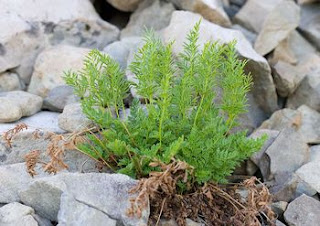What are some Washington State plants that have medicinal uses?
These are just a few examples of native plants that are used medicinally. Please consult your physician before starting any medical treatments and to find the best resources on taking medicinal plants.
Parsley Fern, Cryptogramma acrostichoides
Image © Rod Gilbert, 2006
The roots from this plant have been used to treat colds. Found in rocky habitats, they commonly grow on cliff faces and talus lopes. If you’d like to plant them yourself, they do best in rock gardens.
Broadleaf Stonecrop, Sedum spathulifoliumThese plants also do well in rockeries and are found along coastal cliffs and ledges. Broadleaf stonecrops have been used by local Native Americans as a styptic poultice. In other words, when the plant is ground into a paste, it may help control bleeding.
Licorice fern, Polypodium glycyrrhiza
Image copyrighted Clayton J. Antieau
Licorice ferns have been used for sore throats and are found in moist ground and on tree trunks. These thrive in gardens with moist banks and logs.Native plants are good for your land and provide habitat and food for local wildlife. Help protect local wild habitats by not buying or collecting any wild-dug plants.
Want to learn more about traditional uses for local plants? Spend a nice day outside at the Burke’s Erna Gunther Ethnobotanical Garden, located at the entrance to the Burke Museum on the UW campus.
How do you use native Washington plants? Post your comments below!
The Burke Museum partners with the Seattle PI's Big Blog to answer commonly asked questions about the natural and cultural history of our region. This post originally appeared on the Big Blog on June 12.
Got a question for next time? Send it here!



